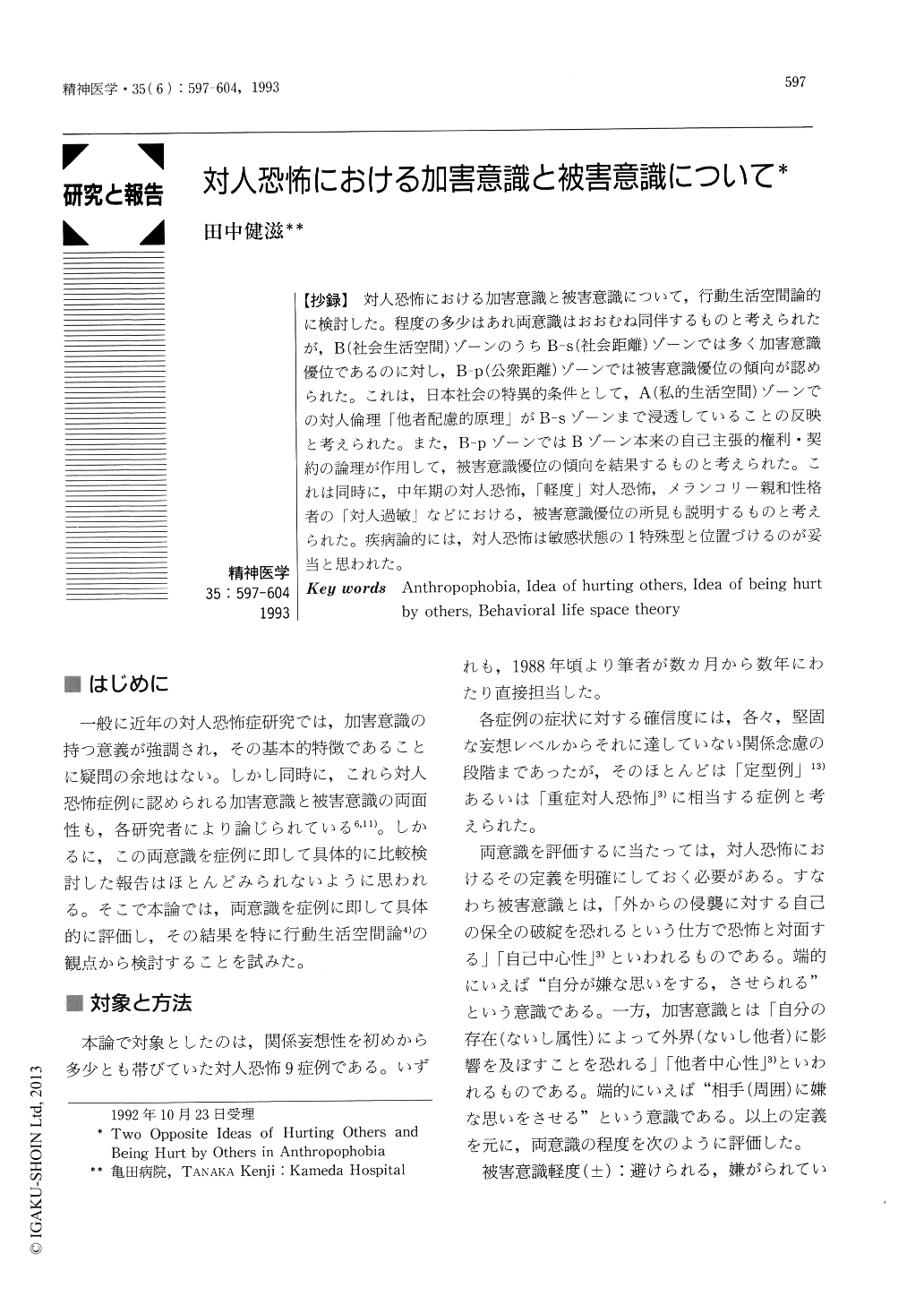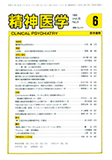Japanese
English
- 有料閲覧
- Abstract 文献概要
- 1ページ目 Look Inside
【抄録】 対人恐怖における加害意識と被害意識について,行動生活空間論的に検討した。程度の多少はあれ両意識はおおむね同伴するものと考えられたが,B(社会生活空間)ゾーンのうちB-s(社会距離)ゾーンでは多く加害意識優位であるのに対し,B-p(公衆距離)ゾーンでは被害意識優位の傾向が認められた。これは,日本社会の特異的条件として,A(私的生活空間)ゾーンでの対人倫理「他者配慮的原理」がB-sゾーンまで浸透していることの反映と考えられた。また,B-pゾーンではBゾーン本来の自己主張的権利・契約の論理が作用して,被害意識優位の傾向を結果するものと考えられた。これは同時に,中年期の対人恐怖,「軽度」対人恐怖,メランコリー親和性格者の「対人過敏」などにおける,被害意識優位の所見も説明するものと考えられた。疾病論的には,対人恐怖は敏感状態の1特殊型と位置づけるのが妥当と思われた。
It has been said that the delusion of hurting others mentally because of displeasing faults which patients imagine themselves to have, is one of the most characteristic symptoms in so called typical anthropophobia. On the other hand, we often observe the delusion of patients, being hurt mentally by others because of their imagined faults. The author, therefore, examined these two opposite ideas in 9 cases of typical anthropophobia from the viewpoint of behavioral life space theory. The results were as follows:
1) The idea of hurting others mentally was predominant in the B-s (social distance) zone, which is the near part of the B zone (the interpersonal space for social life). This phenomenon is considered to be associated with a special condition of Japanese society: “the principle of being harmonious and homogeneous”, which was supposed originally to work in only the A zone (the interpersonal space for familiar life), works also even in the B-s zone. 2) Contrary to this, the idea of being hurt mentally by others was predominant in the B-p (public distance) zone, which is the far part of B zone. This phenomenon is considered to be associated with “the principle of being individualistic and independent” in B-p zone, which must work originally in all B zone. 3) The illusion of being hurt mentally by others was predominant in anthropophobia of middle age, in mild anthropophobia and in mild depressive state of “melancholic type” personality. This phenomenon is considered to be explained from the above finding. 4) Anthropophobia seems to be able to be diagnosed as a special type of sensitive state involving the invasion of “the principle of being harmonious and homogeneous” into the B-s zone. This occurs because of a very special social situation. 5) Finally the author pointed out that it is useful for detailed studies on anthropophobia to use the questions that enquire which interpersonal space a patient uses, and which idea is predominant when the patient is in that space.

Copyright © 1993, Igaku-Shoin Ltd. All rights reserved.


